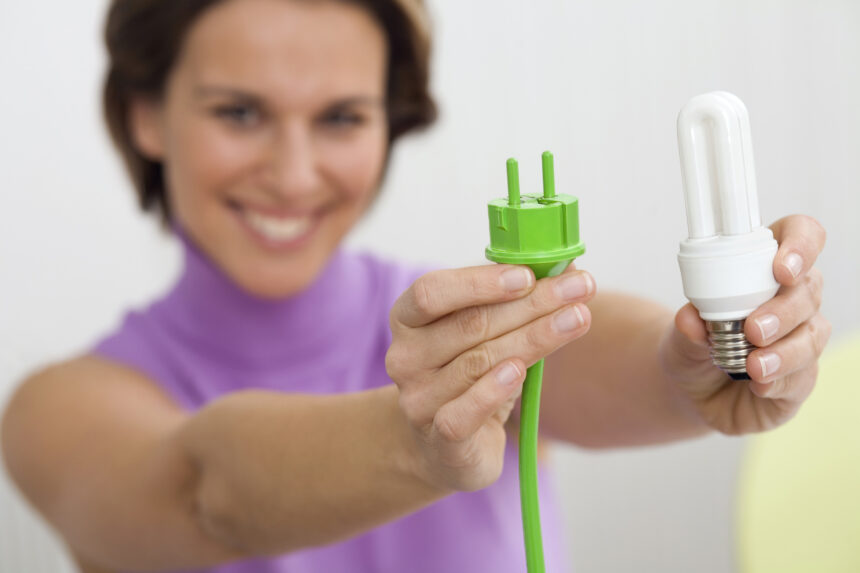Saving electricity during winter and summer is crucial due to the significant increase in energy demand during these seasons, which puts a considerable strain on power grids. In winter, heating systems and extended lighting usage drive up electricity consumption, while in summer, air conditioning and cooling appliances contribute to peak demand. This heightened usage can lead to higher utility bills, increased greenhouse gas emissions, and a greater risk of power outages. By conserving electricity, we can alleviate stress on the electrical infrastructure, reduce environmental impact, and promote sustainable energy practices, ultimately ensuring a more stable and cost-effective energy supply for everyone.
Saving energy throughout the year involves adjusting your home habits based on the season. Here are strategies for both summer and winter to help you conserve energy and reduce utility costs:
Summer Energy-Saving Tips:
1. Use Fans Wisely
Utilize ceiling fans to circulate air and create a wind-chill effect, which can make the room feel cooler without actually lowering the temperature. This allows you to raise your thermostat by a few degrees, reducing the load on your air conditioning system and saving energy without sacrificing comfort. Fans should be used in occupied rooms only, as they do not lower the room temperature but rather make people feel cooler by moving air over the skin.
2. Program Your Thermostat
Set your thermostat to higher temperatures when you’re away from home or asleep, and lower it only when you’re at home and need cooling. A programmable thermostat can automate these adjustments, ensuring your air conditioning system runs efficiently without unnecessary cooling. This not only saves energy but also reduces utility bills, as it prevents the air conditioner from working harder than necessary during peak hours.
2. Keep Curtains and Blinds Closed
Block out direct sunlight during the hottest part of the day by keeping curtains and blinds closed. Use light-colored window treatments that reflect heat away from the house rather than absorbing it. This helps to reduce heat gain inside your home, making it easier to maintain a cooler indoor temperature and reducing the need for air conditioning.
3. Use Energy-Efficient Appliances
Choose Energy Star certified appliances, such as refrigerators, air conditioners, and fans, which are designed to use less energy and operate more efficiently. These appliances can significantly lower your electricity consumption, leading to cost savings and a reduced environmental footprint. Energy-efficient models often come with advanced features that enhance performance while consuming less power.
4. Minimize Heat from Appliances
Limit the use of heat-generating appliances, like ovens and clothes dryers, during the hottest times of the day. These appliances can increase indoor temperatures, making your air conditioner work harder to cool the space. Instead, opt for outdoor grilling or using a microwave, and air-dry clothes when possible. By minimizing indoor heat sources, you can maintain a more comfortable temperature without relying heavily on your cooling system.
Winter Energy-Saving Tips:
1. Seal Drafts and Insulate
Sealing drafts around windows, doors, and vents is essential for preventing cold air from entering your home and warm air from escaping. Use weather stripping and caulk to close gaps, and ensure that your attic, walls, and floors are well-insulated. Proper insulation helps retain heat, reducing the workload on your heating system and lowering your heating costs. Insulating your home not only keeps it warmer but also enhances energy efficiency by minimizing heat loss.
2. Lower Your Thermostat
Lowering your thermostat by a few degrees can result in significant energy savings. Dressing warmly indoors allows you to stay comfortable even at lower temperatures. Programmable thermostats are particularly useful as they can automatically adjust the temperature based on your schedule to ensure that your home is warm when you need it to be and conserving energy when you don’t. This automation helps optimize heating efficiency and reduces unnecessary energy consumption.
3. Maximize Sunlight
Taking advantage of natural sunlight can help heat your home for free. During the day, open curtains and blinds to let in sunlight, which can raise the indoor temperature and reduce the need for artificial heating. At night, close curtains and blinds to retain the heat gained during the day and minimize heat loss through windows. Using heavy, insulating window treatments can further enhance this effect, helping to keep your home warm and cozy.
4. Use Energy-Efficient Heating Systems
Upgrading to energy-efficient heating systems, such as high-efficiency furnaces, boilers, or heat pumps, can significantly reduce energy usage. These systems are designed to use less energy while maintaining comfortable temperatures, leading to lower utility bills and a smaller environmental footprint. Look for Energy Star certified models, which meet strict energy efficiency guidelines and offer better performance and savings over traditional systems.
5. Maintain Heating Equipment
Regular maintenance of your heating equipment is crucial for ensuring optimal efficiency and performance. Schedule annual service checks to clean and inspect your furnace, boiler, or heat pump. Replace air filters as recommended by the manufacturer in order to improve airflow and prevent the system from overworking. Proper maintenance not only extends the lifespan of your heating equipment but also enhances its efficiency, leading to lower energy consumption and costs.
By implementing these seasonal energy-saving strategies, you can reduce your energy usage, lower utility bills, and contribute to a more sustainable environment throughout the year. Adjusting your habits based on seasonal changes helps maximize comfort while minimizing energy waste.




